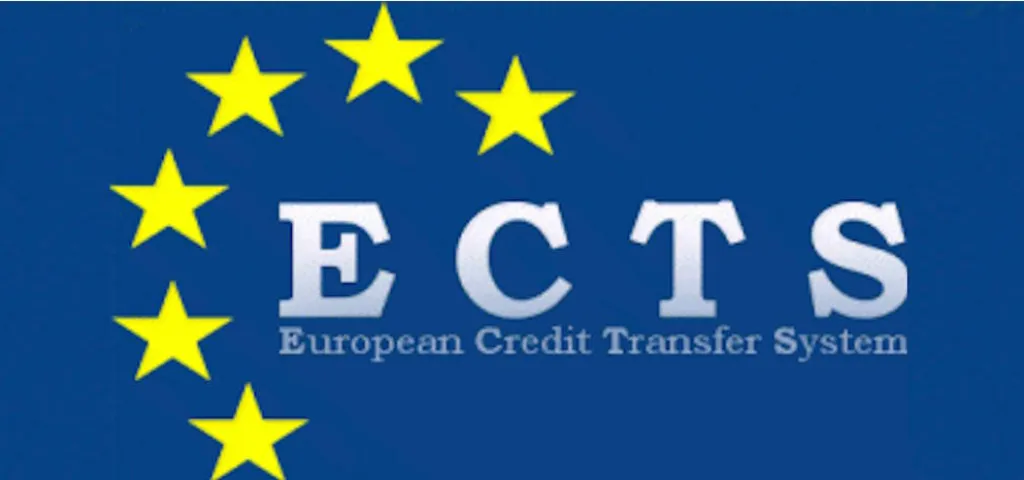
Introduction
The European Credit Transfer and Accumulation System (ECTS) is a tool of the European Higher Education Area (EHEA) for making studies and courses more transparent and thus helping to enhance the quality of higher education.
ECTS was instituted in 1989, within the Erasmus programme, as a way of transferring credits that students earned during their studies abroad into credits that counted towards their degree, on their return to studying in their home institution. In the following years, it came to be used not only for transferring credits, on the basis of workload and achieved learning outcomes, but also for accumulating them in institutions’ degree programmes.
ECTS key features
ECTS is a learner-centred system for credit accumulation and transfer, based on the principle of transparency of the learning, teaching and assessment processes. Its objective is to facilitate the planning, delivery and evaluation of study programmes and student mobility by recognising learning achievements and qualifications and periods of learning.
ECTS credits express the volume of learning based on the defined learning outcomes and their associated workload. 60 ECTS credits are allocated to the learning outcomes and associated workload of a full-time academic year or its equivalent, which normally comprises a number of educational components to which credits (on the basis of the learning outcomes and workload) are allocated. ECTS credits are generally expressed in whole numbers.
Learning outcomes are statements of what the individual knows, understands and is able to do on completion of a learning process. The achievement of learning outcomes has to be assessed through procedures based on clear and transparent criteria. Learning outcomes are attributed to individual educational components and to programmes at a whole. They are also used in European and national qualifications frameworks to describe the level of the individual qualification.
Workload is an estimation of the time the individual typically needs to complete all learning activities such as lectures, seminars, projects, practical work, work placements and individual study required to achieve the defined learning outcomes in formal learning environments. The correspondence of the full-time workload of an academic year to 60 credits is often formalised by national legal provisions. In most cases, workload ranges from 1,500 to 1,800 hours for an academic year, which means that one credit corresponds to 25 to 30 hours of work. It should be recognised that this represents the typical workload and that for individual students the actual time to achieve the learning outcomes will vary
Allocation of credits in ECTS is the process of assigning a number of credits to qualifications, degree programmes or single educational components. Credits are allocated to entire qualifications or programmes according to national legislation or practice,
where appropriate, and with reference to national and/or European qualifications frameworks. They are allocated to educational components, such as course units, dissertations, work-based learning and work placements, taking as a basis the allocation of 60 credits per full-time academic year, according to the estimated workload required to achieve the defined learning outcomes for each component.
Awarding credits in ECTS is the act of formally granting students and other learners the credits that are assigned to the qualification and/or its components if they achieve the defined learning outcomes. National authorities should indicate which
institutions have the right to award ECTS credits. Credits are awarded to individual students after they have completed the required learning activities and achieved the defined learning outcomes, as evidenced by appropriate assessment. If students and other learners have achieved learning outcomes in other formal, non-formal, or informal learning contexts or timeframes, credits may be awarded through assessment and recognition of these learning outcomes.
Accumulation of credits in ECTS is the process of collecting credits awarded for achieving the learning outcomes of educational components in formal contexts and for other learning activities carried out in informal and non-formal contexts. A student can accumulate credits in order to:
- obtain qualifications, as required by the degree-awarding institution;
- document personal achievements for lifelong learning purposes.
Transfer of credits is the process of having credits awarded in one context (programme, institution) recognised in another formal context for the purpose of obtaining a qualification. Credits awarded to students in one programme may be transferred from an institution to be accumulated in another programme offered by the same or another institution. Credit transfer is the key to successful study mobility. Institutions, faculties, departments may make agreements which guarantee automatic recognition and transfer of credits.
ECTS users' guide 2015

